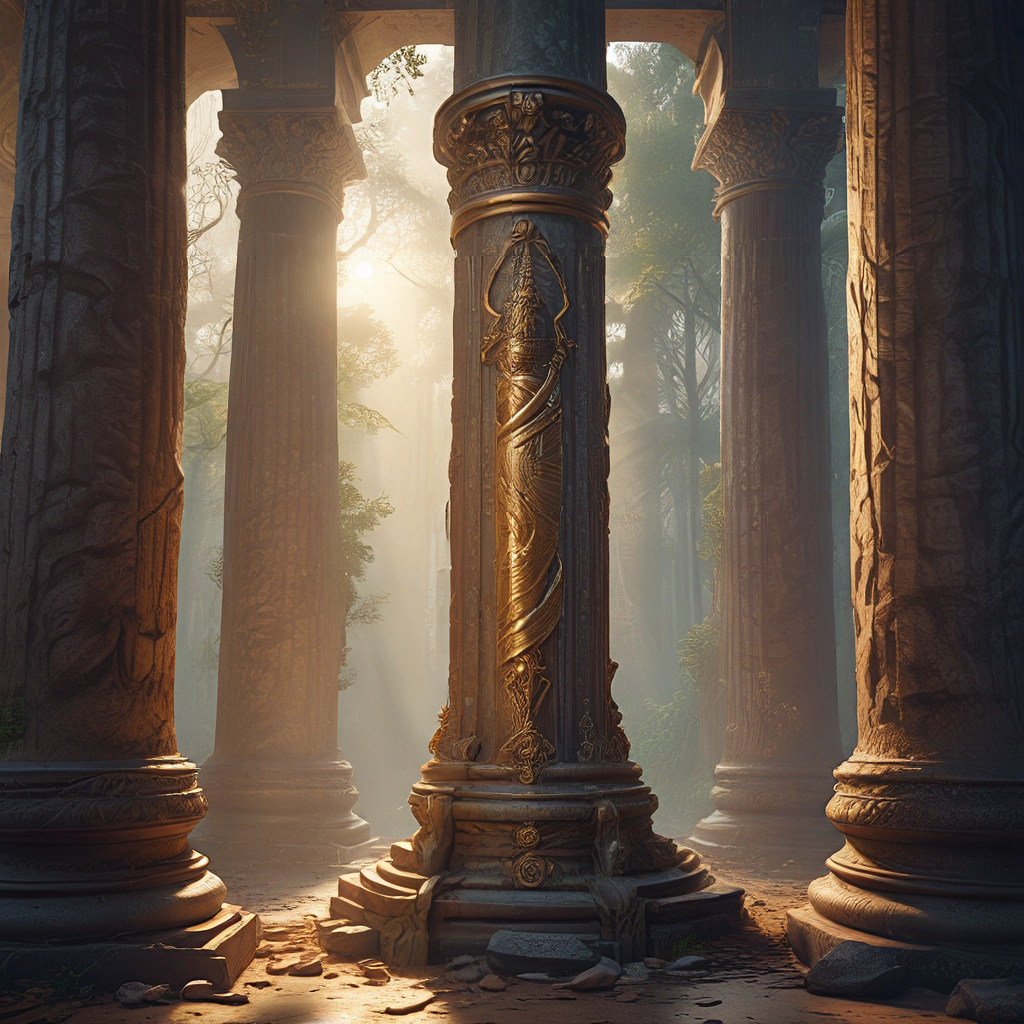The Djed Pillar: A Symbol of Stability and Endurance
The Djed pillar, a powerful symbol in ancient Egyptian religion, stands as a testament to the enduring values of stability, endurance, and renewal. This iconic pillar, often depicted as a four-sided, elongated structure with horizontal bars, transcended its physical form to represent the very essence of cosmic order and the strength of life itself.
Origins and Evolution of the Djed Pillar
The origins of the Djed pillar remain shrouded in mystery, but scholars believe it likely emerged as a representation of the sacred tree, a symbol of fertility and growth. Its connection to the god Osiris, god of the underworld and resurrection, is undeniable. The Djed pillar’s association with Osiris, who was resurrected after his death, solidified its role as a symbol of life, renewal, and the triumph over death.
The Djed pillar’s design evolved over time, with variations appearing in different periods of Egyptian history. Early depictions often show the pillar with simple horizontal bars, while later representations feature more elaborate designs, including additional elements like a crown or a uraeus (a cobra symbolizing royal power). Despite these variations, the core symbolism of the Djed pillar remained consistent, representing stability, endurance, and the cycle of life and death.
The Djed Pillar and Osiris
The Djed pillar’s connection to Osiris is deeply intertwined with the Egyptian belief in the afterlife and the cyclical nature of life. Osiris, after being murdered by his jealous brother Set, was resurrected by his wife Isis, symbolizing the triumph of life over death and the power of renewal. The Djed pillar, representing Osiris’s resurrected body, served as a visual manifestation of this triumph, embodying the enduring spirit of life.
The Djed pillar often appears in scenes depicting Osiris’s resurrection, standing beside him or supporting his body. Its presence served as a reminder of Osiris’s power and the promise of eternal life for those who adhered to the principles of Ma’at, the concept of cosmic order and justice.
The Djed Pillar and the World Order
Beyond its association with Osiris, the Djed pillar played a crucial role in maintaining cosmic order and stability. It represented the axis mundi, a central pillar connecting heaven, earth, and the underworld, symbolizing the balance and harmony of the universe. The Djed pillar stood as a reminder of the interconnectedness of all things and the importance of maintaining order to ensure prosperity and well-being.
The pillar’s strength and immovability served as a metaphor for the stability of the universe. It symbolized the permanence of the natural laws that governed the world, ensuring the cyclical nature of life and the continuity of existence. This concept of stability was essential to the ancient Egyptians, who relied on the predictability of the Nile’s annual floods and the regularity of the seasons for their survival.
Ritual and Ceremonial Use of the Djed Pillar
The Djed pillar played a significant role in various Egyptian rituals and ceremonies, reflecting its multifaceted symbolism. In funerary rites, the pillar represented the deceased’s resurrection and their entry into the afterlife. It was often placed in tombs or carried in funerary processions, offering solace and hope to the bereaved.
The pillar also featured prominently in fertility festivals, celebrating the annual flooding of the Nile and the renewal of life represented by the god Osiris. Its presence during these celebrations symbolized the cycle of growth and abundance, ensuring fertility and prosperity for the land and its people.
In temple ceremonies, the Djed pillar served as a focal point for offerings and prayers, connecting the faithful to the divine and reinforcing the principles of Ma’at. Priests would carry the pillar in processions, symbolizing the divine order and seeking to maintain harmony between the earthly and celestial realms.
The Djed Pillar in Art and Architecture
The Djed pillar’s presence permeates Egyptian art and architecture, serving as a constant reminder of its profound symbolism. It is depicted in tomb paintings, sculptures, and temple reliefs, often flanking Osiris, representing the king, or guarding the entrance to sacred spaces.
The pillar’s architectural significance is evident in its use as a decorative element in temple pylons and columns. Its imposing presence reinforced the power and authority of the Pharaoh, symbolizing his role as the guardian of Ma’at and the stability of the kingdom.
The Djed pillar’s depiction in art and architecture served as a powerful visual reminder of the interconnectedness of the earthly realm with the divine. It served as a symbol of hope, resilience, and the promise of eternal life, reinforcing the core values of ancient Egyptian civilization.
The Djed Pillar and the Concept of Maat
The Djed pillar embodies the concept of Ma’at, the fundamental principle of cosmic order and justice in ancient Egyptian religion. The pillar’s stability and endurance reflected the unchanging nature of divine law, which governed the universe and ensured its harmony.
Ma’at dictated the proper functioning of the universe, maintaining balance and equilibrium in all things. The Djed pillar, representing the axis mundi, served as a visual manifestation of Ma’at, symbolizing the unwavering force that kept the world in order. It was through adhering to the principles of Ma’at, including truth, justice, and harmony, that individuals could hope to achieve eternal life in the afterlife.
The Djed pillar, with its enduring symbolism and profound meaning, remains a powerful icon of ancient Egypt. It embodies the enduring values of stability, endurance, and renewal, reminding us of the interconnectedness of life, the power of resurrection, and the importance of maintaining cosmic order.




